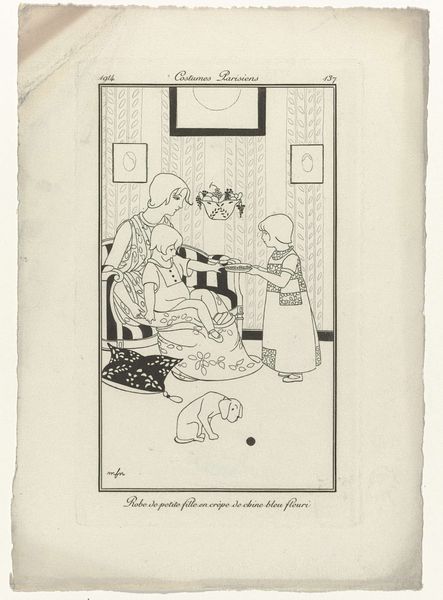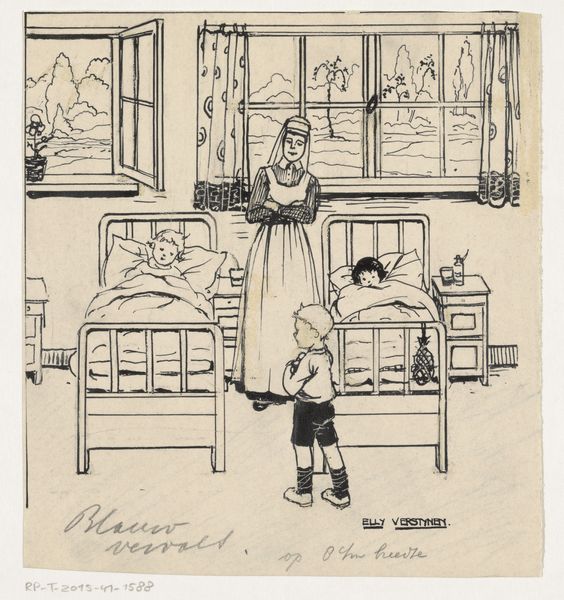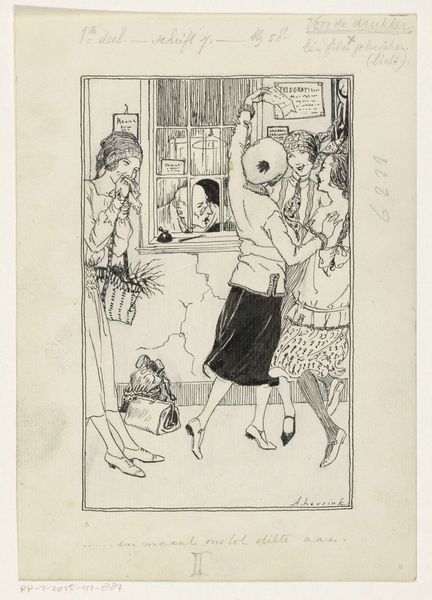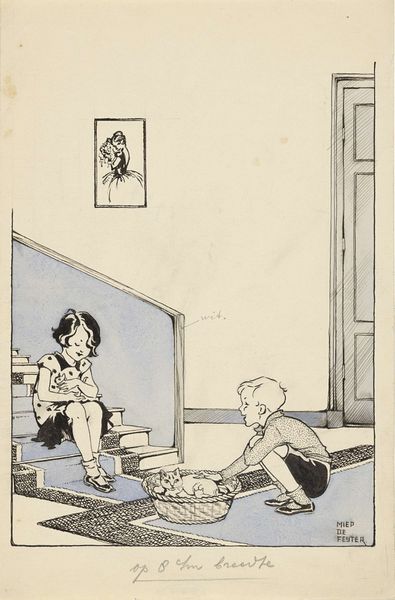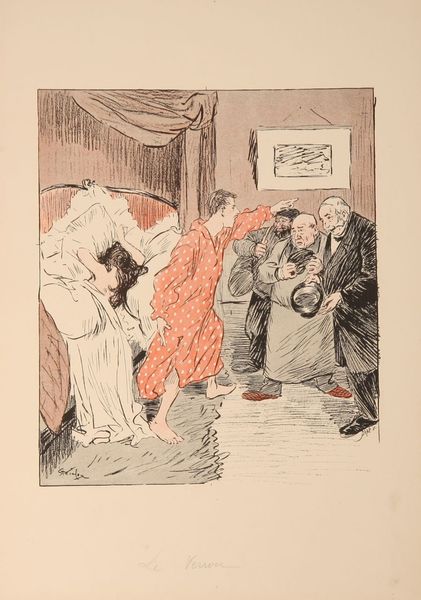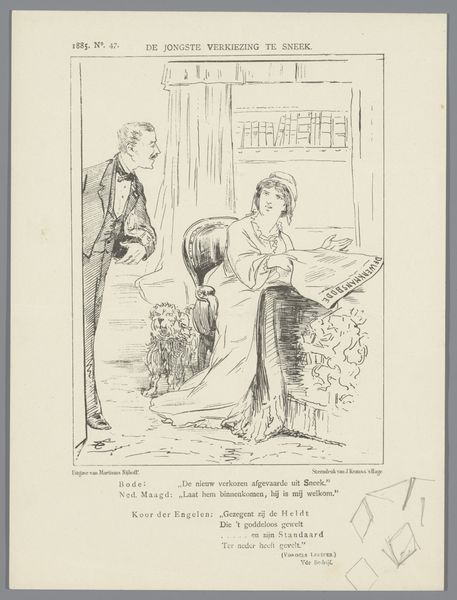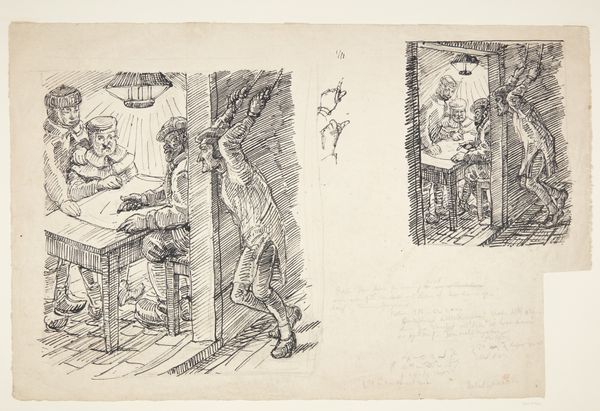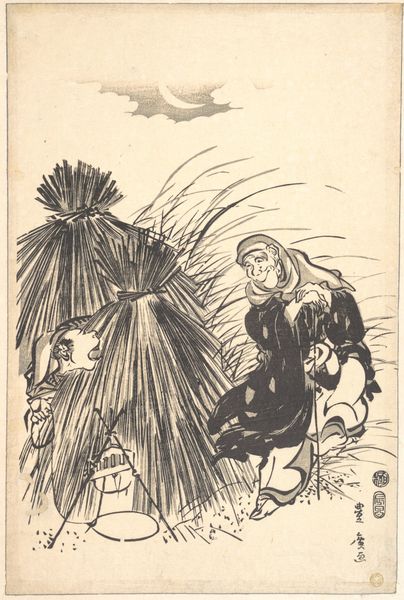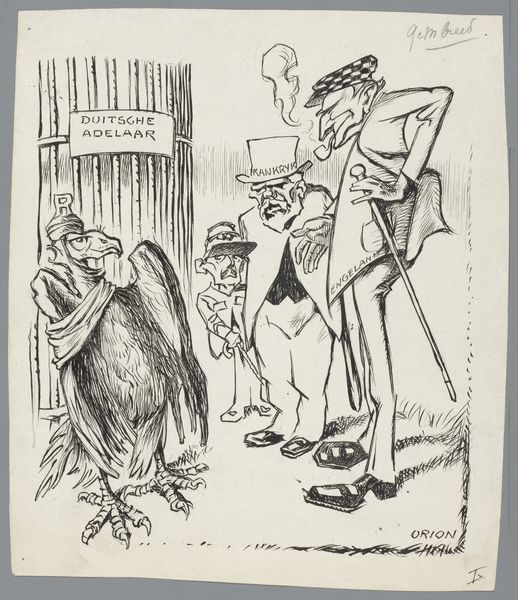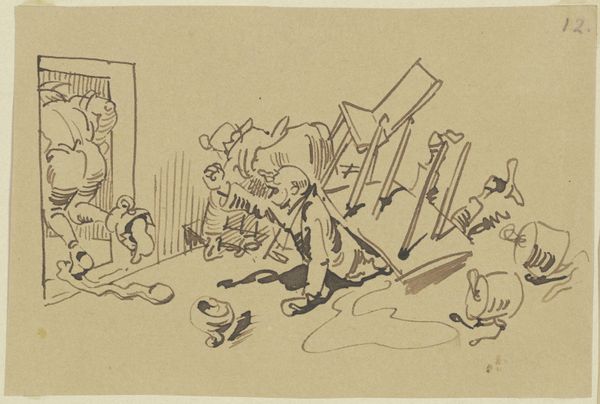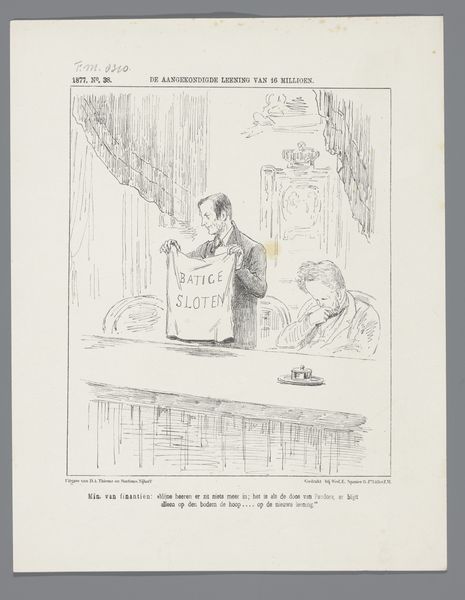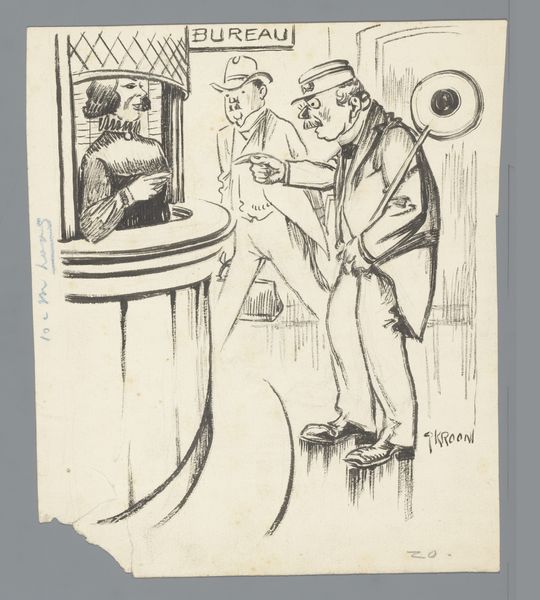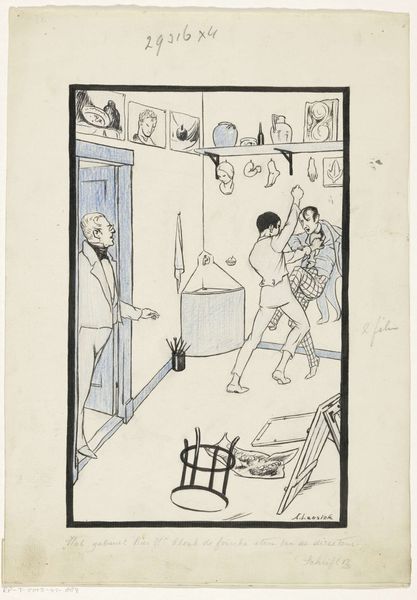
drawing, paper, pen
#
portrait
#
drawing
#
mother
#
figuration
#
paper
#
intimism
#
pen
#
genre-painting
#
modernism
Dimensions: height 189 mm, width 143 mm
Copyright: Rijks Museum: Open Domain
Curator: This drawing, titled "Vrouw knuffelt een baby in bed," or "Woman hugging a baby in bed," is by Elly Verstijnen, likely created between 1900 and 1930. It's rendered in pen on paper. What's your initial take on this piece? Editor: The scene feels so familiar. The simplicity of the lines—the way the pen scratches across the paper—gives it an immediacy, like a quick sketch capturing a fleeting, intimate moment. It's primarily black and white but seems to hint at so many hues, a softness…almost palpable. Curator: Indeed, it speaks volumes despite its starkness. The piece fits neatly within the "Intimism" movement—a style emphasizing private and domestic scenes. Verstijnen offers a glimpse into a seemingly everyday maternal moment, but I think the setting suggests more about the societal position of the family, what is your opinion? Editor: Absolutely. It brings up questions of labor for me. The medium itself, pen on paper, signals accessibility, but also the constraints that artists faced, probably mainly economical ones. This wasn't high-cost production; it was a mode available to many, allowing depictions of subjects not typically immortalized in art – this domesticity we’re looking at and how different it would have been experienced in society back then. Curator: That's a wonderful point about accessibility. It reflects a shift in art's role during the Modernist period—moving from the purely academic to reflecting real life and, often, the lives of women, through their own perspective. The focus on genre-painting, portraying scenes from everyday life, becomes so prominent then. Editor: And it’s worth noting the artistic labor that so frequently goes unnoticed – particularly the labor of women. Consider the level of artistic craft evident in rendering even the seemingly simple lines of the bedsheets and pillows. These elements frame the central figures, underscoring the domestic sphere. Curator: Precisely. Verstijnen draws us into the quiet, private sphere of mother and child. I’m drawn to wonder who the children at the end of the bed are in relation to them and why they seem so curious and cautious in peering at them. There's something very vulnerable about such scenes being put on display, particularly for their family! Editor: It’s a moment laden with intimacy—a moment viewers are privy to, invited into – making the ordinary into something almost reverent. I guess I am mostly affected by that idea of making the art based on accessible materials but carrying a more profound impact about domesticity and those within those spheres. Curator: Yes, a pertinent observation – a small drawing that encourages reflection on not only domestic life but the circumstances that bring art into existence, what it then says about us. Editor: Indeed. It invites consideration for the materials, labor, and social environment intertwined within that intimate scene, rendered in simple lines.
Comments
No comments
Be the first to comment and join the conversation on the ultimate creative platform.
